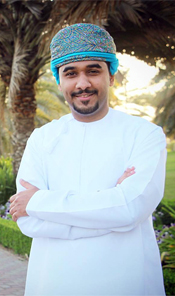The Pathology Residency admin office, which consists of Shelley Berkow (Program Manager) and Dan Kim (Program Assistant), is currently full steam ahead in CaRMS mode. Interviews will be the week of January 15, and we look forward to meeting all our applicants in the New Year. It’s one of our busiest but favourite times of the year, as we get to talk to students from different provinces across the country, find out about their interests, the stress of CaRMS, the cities they come from, but also we get to tell them about our fantastic pathology programs, and the beautiful city we live in.
In July we welcomed our PGY2 residents who have completed their basic clinical year to the start of their Pathology training, and PGY1 residents for Hematopathology who do not do a clinical year.
In Anatomical Pathology, we welcomed, Sammy Au, Jenny Chu, Mike Steel and Raymond Yip.
Lynne Li in Medical Microbiology, Adrian Levine in Neuropathology and for Hematopathology, Eric McGinnis, Muntadhar Al-Moosawi and Bhupinder Johal.
Medical Biochemistry is now a subspecialty of Internal Medicine, and Catherine Cheng (PGY4) joined the program.
Our admin offices will be moving to the Gordon & Leslie Diamond Health Care Centre in the Spring. More info to follow once a date is confirmed.
The Residency Program office will be closed from noon on Dec 22 and reopen on Jan 2nd.
Getting married in Oman is a multi-step process.

Dr. Muntadhar Al Moosawi
Here is Muntadhar in his traditional dress.
One of the fun aspects of being Program Manager for the Pathology Residency programs, is chatting to our residents that come from different parts of the world, and finding out about their different cultures and background.
Muntadhar Al Moosawi, who is a Hematopathology PGY1 resident and is from Oman, recently told me all about his upcoming marriage party. This is different from the wedding which will be held at a later date, and this is how he explained it to me:
Getting married in Oman is a multi-step process. It starts by proposing to the girl through communications between the boy's and the girl's families after which the couple will be engaged and an engagement party will be held where the couple will wear rings. After a certain period of engagement, there will be a marriage party. This marriage party is meant for gentlemen only (the boy's family, friends and invited guests) and it happens after the Imam talks to the girl and ask her if she accepts marriage to that particular man. If she accepts, the marriage party will be held.
In the marriage party, the Imam will ask the boy if he agrees to marry the girl. This is equivalent to when a couple goes to the church and a priest reads the marriage vows except that in our case the Imam talks to the couple separately. This is just for religious reasons as you can't have a mixed party. So by the end of the marriage party, the couple will be officially married, but still live separately. The final stage is the wedding party which is held at a later date. Finally, after the wedding party they can go on honeymoon and live together, but before that they can't.
So Muntadhar is at the marriage party stage now. He will go back to Oman in Jan for the marriage party, but his wedding will be next year.
The marriage party is going to be on the 12th of January in Oman, Muscat (the capital). It will take place in one of the halls that are specially prepared for this purpose. My family, friends and invited guests will be there. It will start by reading traditional Omani (Mawlid) followed by the Imam giving a short talk and a marriage note. At the end, there will be a dinner and then everyone will come in person to congratulate me. After that, I will run to see Fatma, my lovely wife, and spend all the time with her.


